The notion of finless surfing has been around for as long as the sport itself.

Taken at the end of the 19th Century, when Westerners had all but quashed the 'lewd' act of surfing, this photo shows one of the last alaia surfers, prior to its recent revival.
The iconic image held at Hawaii’s Bishop Museum of a ‘native’ gazing out to the Waikiki lineup, Diamond Head looming in the background, finless alaia board clutched behind him, is now as integral a part of surfing’s photographic history as Greg Noll’s Waimea drops, Tom Carroll’s Pipeline cutback or Laird Hamilton’s ‘Millennium Wave’.
Westerners discovered the sport of surfing for themselves in the early 20th century, maintaining the un-keeled equipment in lieu of any alternative.
But in 1935, a young New Jersey fellow by the name of Tom Blake blew the surfing world apart. Though a formidable collection of innovations can be attributed to Blake, the one for which he is doubtlessly best remembered is salvaging the timber, one-foot long keel from a speedboat and attaching it to the tail of his hollow timber board. This pivotal moment forever changed the concepts of surfing. Tighter turns and steeper lines could now be achieved; the board would no longer slide out at inopportune moments. In effect, an entirely new sport had been spawned.
Bob Simmons applied a second fin, Simon Anderson a third, to create the now ubiquitous thruster.
There can be no denying that the addition of fins to boards has had a vastly influential effect on the sport. Surfers can now perform breath-taking manoeuvres, ride deep in barrels and on the steepest of faces on gargantuan behemoths whilst maintaining trim and hold, expanding surfers’ possibilities exponentially. But in one sense, Blake’s seminal creation marked the death of surfing in its truest form.
There is, however, a surge in interest for those more antiquated models. Some might say that surfing learned to run before it could walk, outmoding design principles before they could be properly explored. We are now seeing a wealth of less conventional craft scattered throughout our surf breaks, so-called ‘retro’ ‘70s fishes being the most recognised and prevalent.
Many of modern surfing’s devotees dispel the resurgence, claiming that if it didn’t work then, it can’t work now.
But with modern design advancements in materials, rail and plan templates and fin foil and placement, these designs aren’t merely nostalgic revisitations, but highly viable, equally applicable alternatives to the modern shortboard.
Over the last decade, this exploration and reinterpretation of past innovations has delved still deeper still into the mists of surfing’s times of yore.
Having been replicating more modern shapes in balsa and paulownia for some time, surfer/shaper Tom Wegener wanted to go further still, in some senses simplifying his boards to discover the true core of the surfing experience in its most natural form.

Wegener in silhouette - image: Nathan Oldfield
Tom’s friend, Valla Surfboards shaper Paul Joske, had visited the Bishop Museum just prior to the turn of the millennium, inspired by the University of Hawaii’s Tom ‘Pahaku’ Stone, who had been meticulously duplicating some historical boards. Joske began experimenting with finless hot curl and kekoa boards, with varying levels of success. Joske’s son, Sage, took up the mantle, surfing double overhead Bells Beach, on Australia’s south coast, with Derek Hynd on an un-finned board he named Kumu, Hawaiian for ‘teacher’.
Inspired by his collaborations with the Joskes, Wegener paid a visit to the Bishop Museum himself, home to some of the oldest surviving surfcraft on the planet. Wegener’s intended quarry was the olo, the original board of kings. Thick, heavy, long and drastically convex top and bottom, the olo was the board ridden only by island royalty, the very best, most accomplished of early surfers. But what he unintentionally uncovered would blow even his concept of modern surfing to pieces.
“The finless boards came about from looking at the boards in the Bishop museum. I was making finned malibus, but I had no concept of making a finless board.
“When I got to the museum, I was ready to template the olo, and did, but what blew my mind was the alaias. I said, ‘holy mackerel! There’s something amazing that I don’t even understand, but clearly, these surfboards are very special and we don’t know anything about them.’”
Over the next two years, Wegener worked on creating and refining the alaias – to the best of his knowledge the first person in the contemporary surfing world to do so.
His early forays were satisfactory at best, but there were still a plethora of design elements he was overlooking or yet to rediscover.
“The first one went okay, but we thought it went great at the time because it was the first one. But we realised that it would always slide sideways as soon as we got into a steep situation.”
This gave rise to a process of experimentation and refinement that took numerous steps toward producing a functional, and as it happened, authentic alaia. Rails were rounded, to the design’s detriment, the bottom was rolled, again diminishing the board’s handling, parallel rails were introduced, different tail templates came into play, and eventually Wegener had an awakening. A rolled bottom gave the board a better hold, a much more down-the-line capability. But this, while more manageable, defeated many of the principles creating the alaia’s ‘la-la’ feel, sliding sideways on the board rather than remaining tight to the line. It wasn’t until Wegener took a closer look at that original image of the surfer at Waikiki that concaves were developed.
This gave the surfer considerably more control, allowing him or her to regain trim after a sideslip, opening Wegener’s mind to the true potential that the newly rediscovered craft posed.

Alaia aficionado, Sage Joske
Wegener’s work paved the way for others. Some were his early protégés, taking for themselves the next steps in finless surfing. Others, such as Sage Joske, were inspired by Tom’s work and began experimenting with alaias for themselves.
“To me personally,” says Sage, “the whole motivation for creating the alaias is just to experience that part of our history, to get a feel for what the Hawaiians were feeling and to feel something similar to what they felt on the waves.”
Again based on the archival artefacts in the Bishop museum and having been surfing other forms of historical equipment for several years, Sage was interested not in bettering or furthering those original boards but replicating them verbatim.
“The Hawaiians possibly spent thousands of years developing those boards. They have this beautiful trim speed, they draw beautiful, high lines on the wave…you can go faster on an alaia than you can on any other kind of board and there’s something inherently beautiful about that, design wise, to me.”
Joske makes the very relevant point that it is not clear just how long the Hawaiians design process had been in the alaia. Potentially tens of generations may have worked towards refining the ultimate craft. Comparatively, modern day surfboards are barely hitting puberty.
Patagonia’s founder and avid surfer, Yvon Chouinard, often cites the French aviator, Antoine de Saint Exupéry, when discussing design: “In anything at all, perfection is finally attained not when there is no longer anything to add, but when there is no longer anything to take away.”
Does this founding principle of design therefore suggest that there is no more perfect board, none more highly refined, than the alaia? Certainly in the sense of speed and the utilisation of the wave’s energy, this is indisputable.
Possibly the alaia’s strongest and most publicised proponent is freesurfer, Dave ‘Rasta’ Rastovich. Having surfed many timber boards, Rasta was one of Wegener’s earlier choices for test pilot and was thrilled to oblige.
“When I think of the alaias, it feels like you have to be very subtle, very simple, very sensitive. Most surfboards with fins you can just push around and feel very powerful and strong. But when you get on an alaia, or any finless board, you have to just chill out and that’s really hard for a lot of us because on those boards you have to just relax. They respond better the more subtle you are.

Dave Rastovich has done more for the advancement of alaia surfing than almost any other individual
“I was talking with Harrison Roach and he was saying how fantastic these boards are in that they just match the speed of the wave. And that was a really good point, that you’re matching, you’re harmonising with the wave.”
These differences to other boards are not isolated. Several years ago, Rasta and Wegener noticed a unique attribute of the boards that defies logical thought. Rasta explains: “We were watching a video of me surfing at Noosa and we were tripping out because, when I came into hollow sections, the board would go convex, so it was bending downwards, not upwards like a normal rocker. And then when I went out onto the flats it would go concave, so it would push and hold the edge. So it’s a very dynamic piece of wood.”
“The elements that make an alaia ride good,” corroborates Wegener, “are the same elements that make a finned board ride bad. For example, a finned board that’s longer is generally easier to ride and catch a wave on, where an alaia, the longer the board the more difficult it is to catch a wave. On a foamed board, the thicker the board is the easier it is to catch a wave on, on an alaia the thinner the board is…so everything is backwards.”
From a surfer’s perspective, the alaia challenges not only the skills but also the very concept of surfing. Most surfboards rely predominantly on fins for their manoeuvrability, only assisted by the rail. Without fins, a surfer is dependent exclusively on the rail. When adjusting one’s line across the wave, one would normally shift weight to the back foot, rotating through the hips to alter the board’s direction. With alaias, one must apply pressure to the outside edge, side-slipping down the wave.
Living and surfing close to Tom Wegener, Harrison Roach observed the discovery and development of alaias in their formative stages. He now ranks as one of the finest practitioners of finless surfing.
“I can’t even compare the two,” says Roach. “It’s almost more like snowboarding than surfing. It’s definitely still surfing but I just take different lines, almost like surfing shortboards versus longboards.
“Just taking the fins away from a board is different, but when you’ve got a piece of wood and it works as well as we’ve found out the alaias work, it’s a pretty valid argument to say it’s the ultimate design. I know it’s not perfect, but to be able to push the limits of some form of surfing to the extent that we’re doing on the alaias is insane… at least once in every session, I’ll think to myself, ‘how the hell did that board do that?’ You look at it differently because you’re not sure how to look at it. You’re not sure what you can and can’t do, whereas on a shortboard, there’s guys that have done it all before.”
1,900 kilometres away, the alaia buzz is also rippling through a subsection of the surfing community. Jarrah Lynch has been experimenting with alaias in the faster, hollower waves of southern Australia, with equal success.
“You could say that it’s just a plank of wood, but it’s got concaves, the rails are refined and thought about and so is the plan shape and it does make a major difference to the speed and what you can do on them.
“Surfing an alaia helps your finned surfing so much, because you’re forced to use your rail. When you switch back to your shortboard it feels a whole lot better because now you’re using the rail as you’re meant to and not just driving off the fins. So riding alaias definitely improves your surfing on regular boards.”
Sage Joske has taken the influence of the alaia full circle, emulating aspects of the finless craft in polyurethane and fibreglass. Blending alaia elements with those of the fish design, Sage has created what he has dubbed the Vector.
“My motivation for the alaia / fish hybrid was primarily to put that alaia double-edged square rail into foam. The board’s got an alaia outline, the bottom roll, but some of the control structures of a fish. It has a fish swallow, a very gentle rocker and keels that are eight inches long but only an inch and a quarter high, so they create very low drag, but give you just that little bit of direction.
“I thought I’d make it and ride it for a few months but that it wouldn’t go very well. But I just had so much fun on it that I ended up making it a model and I think it’s going to be a really popular board. I think, for me, it was a logical step to make because I come from a foam and fibreglass background and it helps me understand those alaia elements. I’m a bit cautious to use words like ‘good’ or ‘better’… On the Vector, there are certain waves that it’s really hard to ride in and others that are a lot easier. You’re drawing totally different lines on the wave and it gives you a totally unique experience.”
One the foremost members of the finless fraternity, certainly in the foam and fibreglass realm, is Derek Hynd. Unlike his timber surfing brothers, Hynd’s craft are almost exclusively created in modern materials – polyurethane, fibreglass and polyester resin. His past, atypical of his more diverse styles of today, rested firmly within or around the world pro tour. Ranked 7th in the world himself, he went on to train many an upcoming athlete, not least former world champion Mark Occhilupo. At first he may seem like an unlikely advocate of more alternative surfing methods but an oversaturation of commercialism has opened his eyes further to the purer form of sliding.
“Even when I was coaching a bunch of surfers on the tour, I didn’t appreciate what they had to do in the water in order to win heats. I think meeting Skip Frye very early in the piece had a lot to do with convincing me that it was totally about the glide and not about ‘the spasm.’”
This disillusionment gave rise to an investigation by Hynd into first boards with fins removed and then belly boards adapted to a finless quiver.
“My son was given nine belly boards by [South African belly boarder] Shaun Rosen. They were all roughly of the same dimensions and I thought…it was a perfect opportunity to really experiment in the potential of finless surfing by changing the bottoms and the rails of each board, independent of each other so that I could get a firm idea of the pros and cons of various contours.”
This put Hynd in a position to explore the refinements of finless boards, altering each board in direct comparison to every other.
But while this allowed him to produce boards highly suited to beach breaks, the designs to suit longer, more flowing point waves remained illusive.
“A couple of those boards that I thought would go well at Jeffrey’s Bay worked so poorly that my appreciation of wiping out was never more focal. With every beating I was more determined to get back into a [shaping] bay and create something that would work effectively down the line at J-Bay.”
The direction Hynd has taken in the finless story is distinctly different from that of Wegener, Joske et al, even more so than their disparity of chosen materials. On the one hand, Wegener is rediscovering and refining yet still essentially emulating the early Hawaiian designs.

Derek Hynd takes finless surfing into the realm of foam and fibreglass
One the other, Hynd has been at the peak of high performance equipment and taken the next step, though it may be a step deemed ineffective or inappropriate for the contest forum.
He is quick to highlight Sage Joske’s surfing as a definitive presentation of this aspect of the finless journey:
“No one rides them the same,” he says. “This must be the way surfing was just before the [Second World] War when there was a lot of design shifting going on, people were trying to adapt to a frontier, nothing was necessarily a failure and people got whatever they were riding to work. So there’s a wide-open space ahead.
“Take Sage for example. His ability is one of the most unique approaches to surfing that I’ve ever seen, given how extraordinarily impressive it is. It’s totally different from where Tom is coming from. Tom is just so pure in traditional technique. Sage has that traditional style, but he’s consciously trying to think laterally about how to best get it to work in the performance side of things. Sage, whether on a four-fin or an alaia, I’d rank him at the absolute pinnacle.
“The bond with natural elements seems enhanced, on the right wave, finless. Removing the fins, all of a sudden, one is unsure of where the wave is going to end, how it’s going to pan out, or indeed how the rider is going to make the wave. Moment by moment you’re presented with interesting new constructs. So you’re forced to think quickly, but on the other side of things, nature directs how the situation is going to end up, rather than the surfer dictating to nature. It’s almost an embrace, rather than a stomp.”
There is no denying that finless surfing is drastically different from more conventional surfing. But, what all practitioners of the finless art attest to is the very unique experience it presents to the surfer. The underlying nature of the vessels draws the surfer closer to nature, unable to battle against it or resist it in the same manner as can be achieved on a finned board, instead having to unite more with the energy of the ocean and utilise it within the ride.
The inspiration and the very core of the design in alaias may come from a nostalgic standpoint, but the practice of surfing these ancient craft is, at least in some respects, the ultimate stage of surfing’s evolution.
Hynd attributes this to a fundamental element of product development: time.
“Since Bob [McTavish], my theory is that, between 1967 and the thruster, no one, with the exceptions of The Bonzer and the localized Lis Fish, took time to stay longer than six months on a design before they shifted. If you don’t put the time in, technically, you’re not going to get the response. So long as you can put time into equipment, that’s the technical question answered.
“It’s such a wide open frontier that anything can be made to work if that crucial element of technicality, time, becomes your best friend.”
So, whether finless boards start out in the Bishop Museum or a NASA wind tunnel, they are as valid in today’s surfing community as the most advanced thruster.
Sometimes, the only way to go forward is to first go backwards. As Tom Wegener surmises:
“That’s the most advanced surfing of all. That’s a type of surfing that is far more technical, far more difficult and advanced than regular, finned-board surfing.
What a great piece of writing. I am not sure who wrote it but if brings together many pieces of the puzzle and has some great comments from the guys who are the innovators and thinkers of today. Willing to take things further. Many of them and others like them have been to most Fish Fry's.The fish Fry is somewhere to showcase what they are working on and meet with like minded shapers and designers.







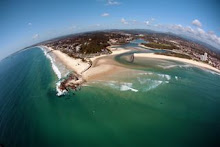




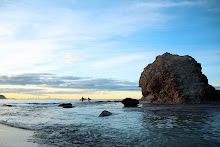


















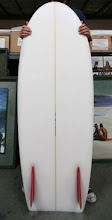


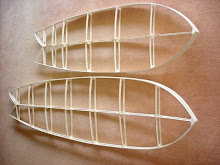

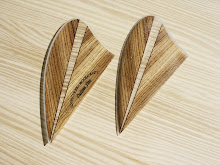

2 comments:
So stand up surfing has finally caught up to what George Greenogh and his fellow mat riders around the world enjoy every time they take a surfmat out for a session! Speed, flex and drift!
Too bad Jacob Stuth doesn't even get a mention.....
Post a Comment